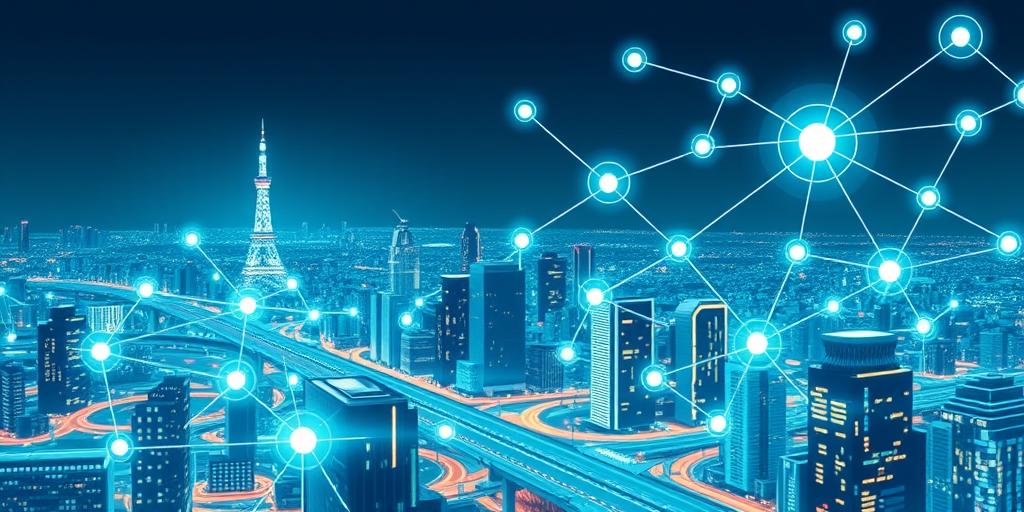AI-Powered Automation: Transforming Industries by 2025
Artificial Intelligence (AI) is rapidly evolving, and its impact on various industries is becoming increasingly profound. By 2025, AI-powered automation is projected to revolutionize how businesses operate, driving efficiency, innovation, and growth. This article explores the transformative potential of AI across different sectors and highlights the key trends to watch.
What is AI-Powered Automation?
AI-powered automation combines the capabilities of artificial intelligence with automation technologies to perform tasks that typically require human intelligence. This includes learning, problem-solving, decision-making, and adaptation. Unlike traditional automation, which follows pre-defined rules, AI automation can handle complex and unstructured tasks, making it highly versatile.
Key Industries Being Transformed
-
Manufacturing: AI is optimizing manufacturing processes through predictive maintenance, quality control, and robotic automation. By analyzing data from sensors and equipment, AI can predict potential failures, reduce downtime, and improve production efficiency.
-
Healthcare: AI is transforming healthcare by enhancing diagnostics, personalizing treatments, and streamlining administrative tasks. AI-powered tools can analyze medical images, predict patient outcomes, and automate appointment scheduling, leading to better patient care and reduced costs.
-
Finance: The financial industry is leveraging AI for fraud detection, risk management, and personalized customer service. AI algorithms can identify suspicious transactions, assess credit risk, and provide tailored financial advice, enhancing security and customer satisfaction.
-
Retail: AI is optimizing retail operations through inventory management, personalized recommendations, and enhanced customer experiences. AI-powered systems can predict demand, optimize pricing, and provide personalized shopping experiences, driving sales and customer loyalty.
-
Transportation: AI is revolutionizing transportation through autonomous vehicles, traffic management systems, and optimized logistics. Self-driving cars, AI-powered traffic control, and smart logistics solutions are improving safety, reducing congestion, and enhancing efficiency.
Benefits of AI-Powered Automation
- Increased Efficiency: AI can automate repetitive and time-consuming tasks, freeing up human employees to focus on more strategic and creative work.
- Reduced Costs: By optimizing processes and reducing errors, AI can lower operational costs and improve profitability.
- Enhanced Accuracy: AI algorithms can perform tasks with greater precision and consistency than humans, minimizing errors and improving quality.
- Improved Decision-Making: AI can analyze vast amounts of data to provide insights and recommendations, enabling better and faster decision-making.
- Enhanced Customer Experience: AI-powered chatbots, personalized recommendations, and proactive customer service can improve customer satisfaction and loyalty.
Challenges and Considerations
While AI-powered automation offers numerous benefits, it also presents several challenges:
- Data Privacy and Security: AI systems rely on large amounts of data, raising concerns about data privacy and security. Organizations must implement robust data protection measures to safeguard sensitive information.
- Ethical Considerations: AI decision-making can raise ethical concerns, particularly in areas such as healthcare and finance. It is essential to ensure that AI systems are fair, transparent, and accountable.
- Job Displacement: The automation of tasks can lead to job displacement, requiring organizations to invest in training and reskilling programs to support affected employees.
- Implementation Costs: Implementing AI-powered automation can be expensive, requiring significant investments in technology, infrastructure, and expertise.
Future Trends in AI Automation
- Hyperautomation: The integration of multiple AI technologies to automate end-to-end processes.
- AI-as-a-Service (AIaaS): The provision of AI solutions through cloud-based platforms, making AI more accessible to businesses of all sizes.
- Edge AI: The deployment of AI processing at the edge of the network, enabling faster and more efficient data analysis.
- Human-AI Collaboration: The collaboration between humans and AI systems to leverage the strengths of both.
Conclusion
AI-powered automation is poised to transform industries by 2025, driving efficiency, innovation, and growth. By understanding the key trends and benefits of AI, businesses can leverage its potential to optimize operations, enhance customer experiences, and gain a competitive edge. However, it is crucial to address the challenges and ethical considerations associated with AI to ensure its responsible and beneficial implementation.
